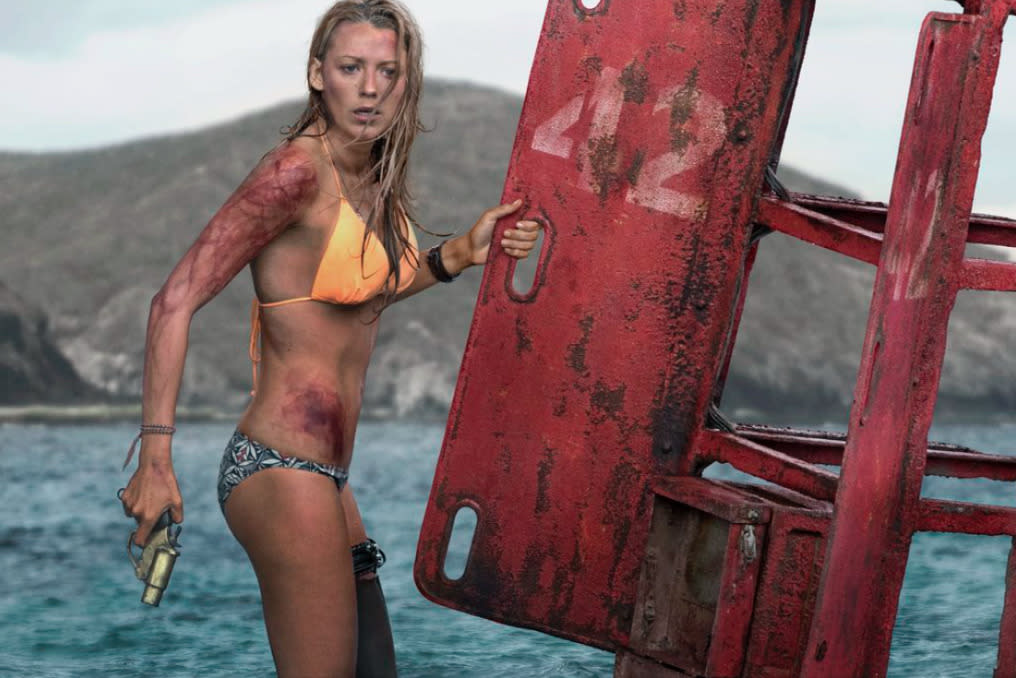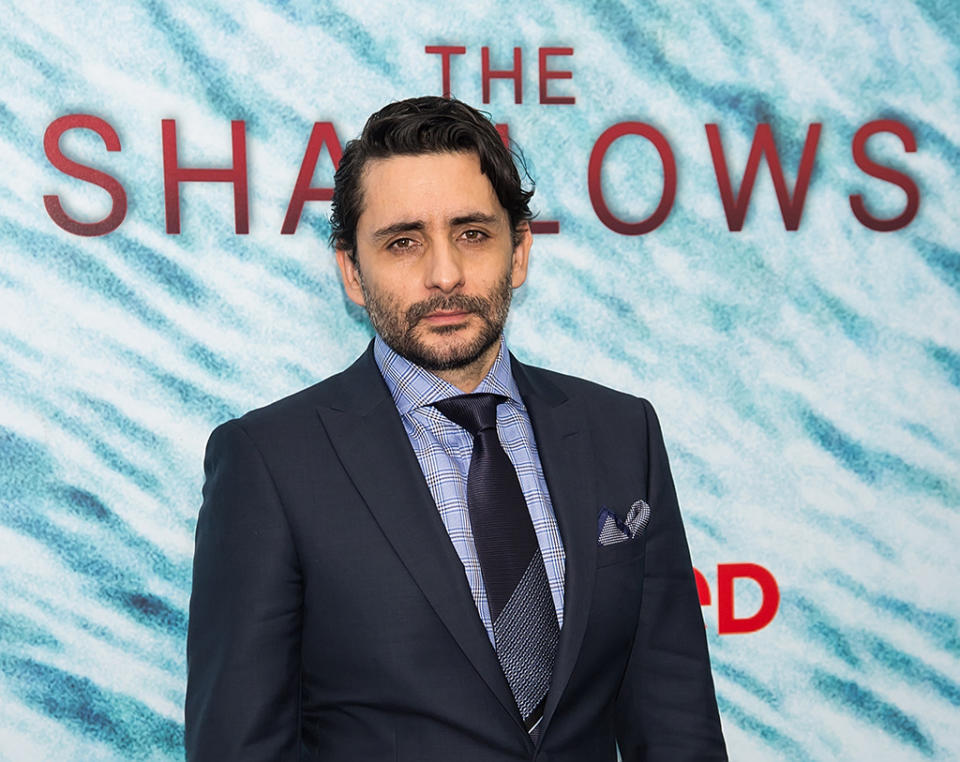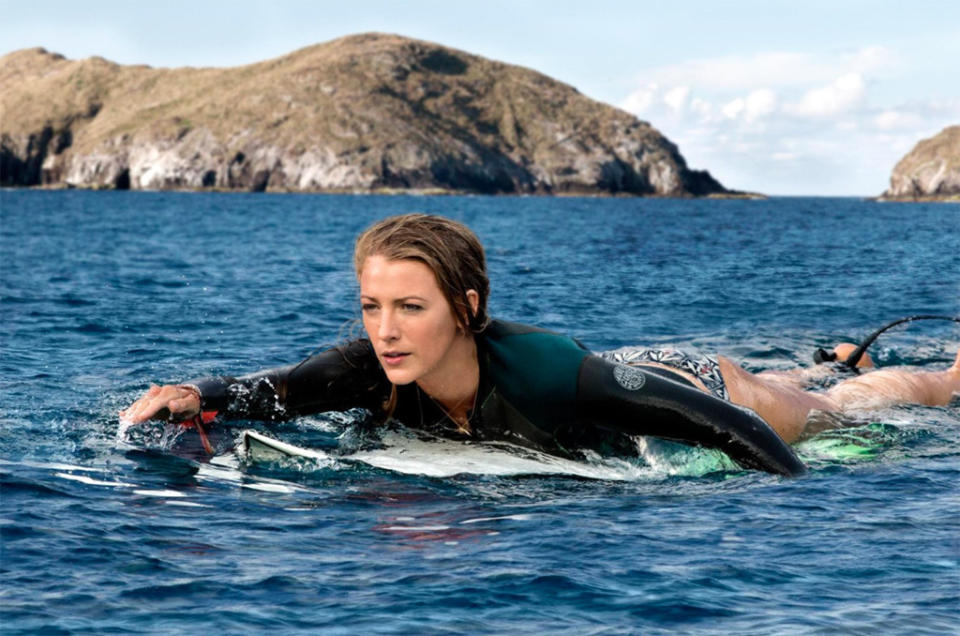'The Shallows' Director on Blake Lively's Shark Face-Off and Creating That Man-Eating Beast

(Photo: Columbia Pictures)
Here’s an equation to keep in mind as you peruse your moviegoing options this weekend: Blake Lively + A Hungry Shark = A Totally Enjoyable Summer Thrill Ride. Floating into a summer movie season dominated by underwhelming sequels, (Pixar’s recent record-setting hit Finding Dory excepted), The Shallows is precisely the kind of well-made, one-off genre picture that studios used to crank out back in, say, the Summer of ’86. Lively plays Nancy, a medical student/surfer who has forsaken her career path to pursue another dream: finding the secret Mexican beach where her mother, who recently lost a battle with cancer, used to shred waves.
But this idyllic setting — the film’s exteriors were filmed off the east coast of Australia — has its dangers, from a rough undertow to stinging sea corals to one great white shark that is all too happy to turn its attention from the whale carcass its been feasting on to a comely blonde surfer. Nancy manages to survive the shark’s initial attack, and seeks refuge on a rock a mere 200 yards from the shore. But the rising tide, the constantly circling shark and her own mental and physical exhaustion make survival seem less and less likely.
Related: 25 Deep-Dive Facts About ‘Jaws,’ the Wildest, Most Waterlogged Movie Shoot of All Time
The tradition of summer shark movies dates back to Steven Spielberg’s 1975 blockbuster, Jaws, and The Shallows director Jaume Collett-Serra — whose previous credits include the cult horror movie Orphan and Liam Neeson’s airplane thriller Non-Stop — was well-aware of the legacy that preceded him. Speaking with Yahoo Movies, the Spanish filmmaker talked about how modern movie sharks differ from the ones who swam through the waters back in Spielberg’s day (when they swam at all, of course) and reveals that a surprising amount of the movie was shot on a soundstage rather than the open water.

Director Jaume Collett-Serra at the New York premiere of ‘The Shallows’ (Photo: Gilbert Carrasquillo/FilmMagic)
Ever since Jaws, the big question facing any director of a shark movie is: When do you show the shark? The shark in The Shallows is a largely unseen menace for much of the first half of the film; what was your thought process behind when to put it on full display?
This is very strong point-of-view movie. The big metaphor is that you need to face your fears at some point in order to grow. And even if you lose, you’ll find out what you’re made of. So as long as Nancy is running away, she’s not seeing the shark. The moment she decides to confront it, she fully sees it without any filters or tricks. For example, when she gets attacked in the beginning of the film, we don’t show it because she wouldn’t see it from her point-of-view at that point. I’ve heard a lot of testimonies [about shark attacks], and when you’re bitten, everything goes red. You don’t see the attack, and you don’t feel the pain, you just feel the tug and the pain comes later. We tried to be as realistic as possible in that sense.
Related: The Ryan Reynolds Movie That Inspired Blake Lively for 'The Shallows’
The stories about Jaws’ malfunctioning mechanical shark Bruce are part of Hollywood legend. Do you have any of your own shark-related war stories?
This shark is all CGI. So what’s not going to work? We don’t have a shark! [Laughs] I don’t think anyone could have a real shark. You could shoot elements of a shark, but it would never do anything you wanted it to do. Sharks and alligators are these are prehistoric creatures that are still among us. I made a movie with real alligators once, and they’ll do anything they want. Other animals can be trained, but not these animals. So if you’re doing a whole movie with these creatures, you have to recreate them.
Watch the trailer:
When they made Jaws, they used mechanical sharks. Then it became a mixture of part mechanical and part CGI. Now, we’re in the CGI world. We used shapes to displace water [while shooting]. So if the shark is coming out to the water, we had a balloon that we released it. If it landed on the water, we used a cylinder. If a fin was going by, we had a triangular shape that displaced water and then the effects team added the fin later. Visual effects are very expensive, so that was my limitation. This is a very small movie: [It cost] $20 million. Big movies budget $50 to $60 million just for special effects. My whole movie was $20 million, so I could only afford so many shark shots.
The movie begins with a grounded, realistic tone, and then veers off into over-the-top action in the final act. Was that shift in tone reflected in the original script?
I could have done a darker movie, but I wanted to make a fun summer movie. Once your character confronts her fears and fights for what she wants — in this case, her life — you need a battle. And a battle between a young woman and a shark is not a battle unless it’s in a movie. Going for darker realism would only be worth it if this was a true story like 127 Hours. Then, audience would go to the movie to see the person live through it. But if it’s a made-up story, I think you have to let the audience have some fun at the end after making them suffer.

(Photo: Columbia Pictures)
Because she’s by herself for so much of the movie, The Shallows is almost Blake Lively’s version of Cast Away. How did you help guide her performance?
I just tried to make it as easy for her as possible, because she was reacting to nothing. She was in a bluescreen environment with marks and tennis balls, and she’s doing whole scenes from beginning to end. So it was a lot of long takes and a lot of exhausting herself to really put herself in the mood.
We’d often shoot the scene five times in a row, and she’d be there for nearly two hours. For me it was very important to not overwhelm her with notes that were stupid, like “Make [this pause] shorter.” What mattered to me was that she believed what was happening. And she’d have questions for us, like, “Where’s the buoy in this scene?” Or “Can you make a little splash here so that I react?”
Did she do any of the surfing herself?
No, it would have been impossible unless you’re a professional surfer. It looks easy and fun, but those waves are very tall. She was out there paddling on her board, but the rest of the footage was professionals.


